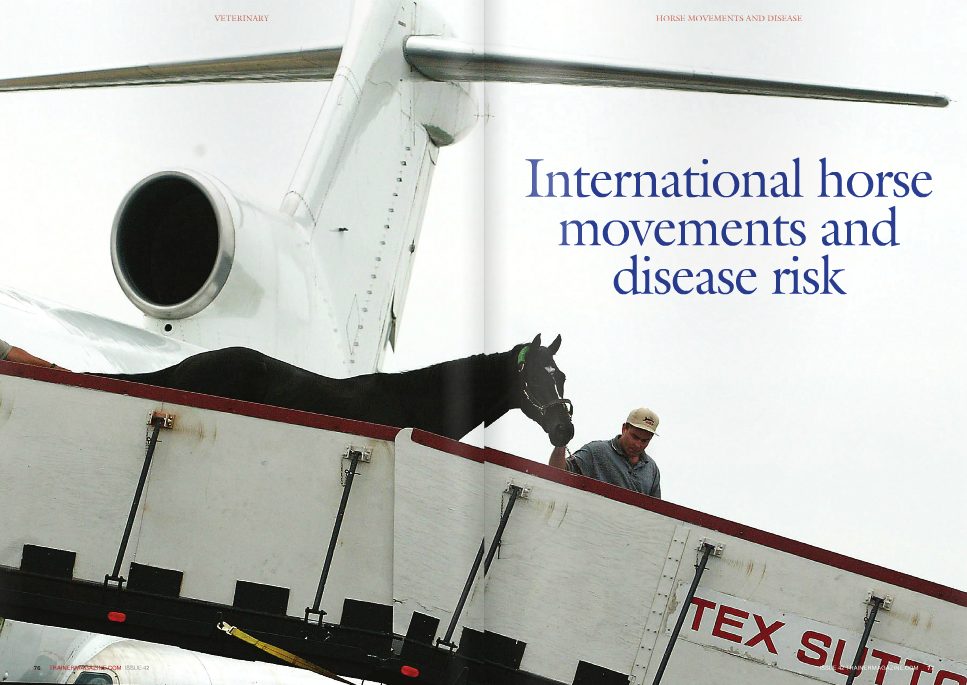The Biome of the Lung
/By Dr. Emmanuelle van Erck-Westergren, DVM, PhD, ECEIM
Of bugs and horses
A couple of weeks ago, I was on an emergency call to a training stable. Half of the horses had started coughing overnight, some had fever, and, as you’d expect when bad karma decides to make a point, the two stars of the premises, due to face their greatest challenge to date the following week, were dull and depressed. A thick and yellow discharge was oozing from their noses. It was not long before the barn became the typical scene of a bad strangles nightmare. The bacteria involved in strangles outbreaks are Streptococcus equi equi, highly aggressive and contagious germs that spread fast and cause disruption in days of training and mayhem in tight racing schedules.
So what inevitably comes to mind when you hear the words “germs” or “bacteria”? Certainly no nice and friendly terms. As veterinarians, we have been taught that microorganisms are responsible for an endless list of gruesome diseases and conditions: abscesses, pneumonia, septicemia ... you name it. All of these need to be identified and eradicated. Thank heavens we still have an arsenal of antibiotics to get rid of the damn bugs. But recent research in human “microbiome” is making us think twice, especially as we aim to hit hard and large with antibiotics.
Never alone
Your healthy and thriving self, and likewise your horse, hosts millions and trillions of bacteria. The “microbiota” is that incredibly large collection of microorganisms that have elected you and your horse as their permanent home. The microbiota is constituted not only by an extremely diverse variety of resident bacteria, but also by viruses, fungi, and yeasts that multiply in every part of your external and internal anatomy. The discovery of this prosperous microbial community has triggered fascinating new research. It has unveiled the unsuspected links that exist between health, disease, and the microbiota. In simple words, these microorganisms are vital to your strength and healthiness.
The microbes that compose the microbiota outnumber our own cells by 10 to one to the extent that the genetic information (or “genome”) you carry is over 99% microbial! And that is what researchers call the “microbiome” or “biome”: the collection of genetic information carried by your microbiota. Fortunately, the very large majority of bacteria is either beneficial or harmless, with only a very tiny fringe represented by potentially pathogenic strains. These microorganisms have evolved with us over thousands of years and the stability of this symbiotic ecosystem has important implications on our health status.
A gut feeling for biome
Research on the biome started with the study of the digestive ecosystem of mice. Researchers from Washington University showed that when they transplanted feces of obese mice in the gut of lean mice, these became obese, and vice versa. In other words, the composition of the gut biome could be said to influence morbid weight gain. Similar studies recently conducted in humans in the Netherlands came to the same conclusions.
We do not yet have all the keys to understanding the underlying processes, but we definitely know that gut microbes influence, amongst many other things, our metabolism, which is to say our capacity to process energy. This opened up tremendous possibilities to improving fitness and treating diseases. The research on the biome has since grown at an exponential rate, covering much larger areas. It was further discovered that problems in the gut biome leading to the proliferation of the wrong microorganisms were responsible for a very wide range of disorders or even chronic conditions that were far from the gut, such as arthritis, depression, and asthma. The biome also seems to be critical in regulating our immune system to raise the alarm when enemies are identified and to modulate its response. The dramatic rise in autoimmune diseases could be a consequence of dietary changes that have disrupted our healthy microbiota.
TO READ MORE --
BUY THIS ISSUE IN PRINT OR DOWNLOAD -
August - October 2018, issue 49 (PRINT)
$5.95
August - October 2018, issue 49 (DOWNLOAD)
$3.99
Why not subscribe?
Don't miss out and subscribe to receive the next four issues!
Print & Online Subscription
$24.95





















